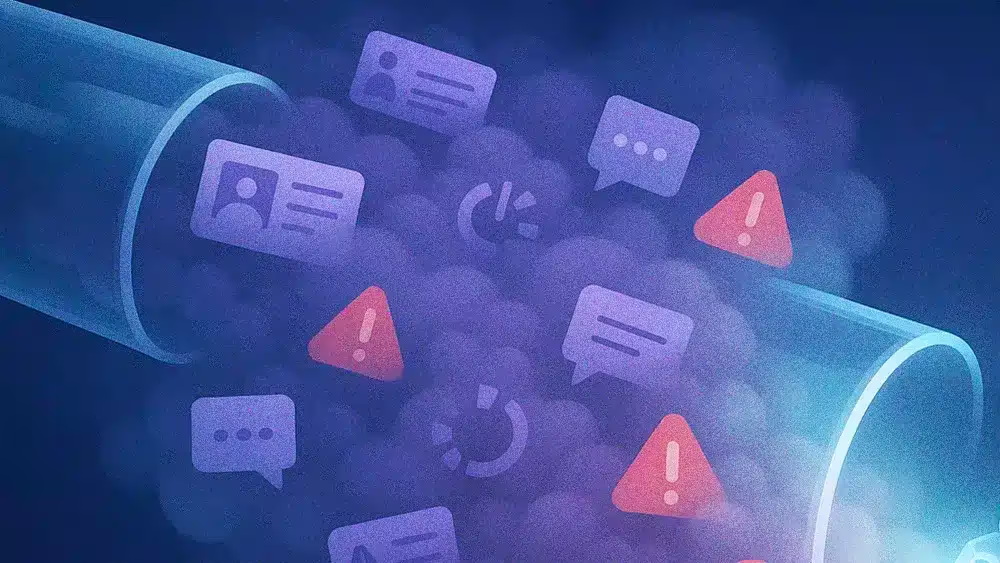
Credit: Outlever
How ‘digital exhaust’ is choking CX, and AI won’t move the needle until the friction is cleared
Key points
GTM and CX expert Kennedy Pereira discusses the importance of data quality in AI integration, noting that poor data can lead to ineffective adoption.
Kennedy says agentic AI is valuable for high-stakes customer retention, recognizing frustration and facilitating human intervention to prevent churn.
Today, about 20% of customer interactions are ‘operational digital exhaust’—things like laborious ID verifications or endlessly repeating your issue. In a world where everyone is pressed for time, customers are implicitly saying, ‘Know me, know my business, know my history, and serve me better—fast.’
The modern customer journey is clogged with siloed systems and tedious loops that test patience. AI promises reinvention, but real progress starts by clearing the everyday friction that drives users away.
Kennedy Pereira, a seasoned AI GTM strategist, former AT&T contact center sales leader, and board director at a Stealth AI Foundry in the Valley, brings 25 years of experience in enterprise tech to the table and cuts through the AI hype with a pragmatic view of how to achieve real CX improvements.
Running on fumes: "Today, about 20% of customer interactions are 'operational digital exhaust'—things like laborious ID verifications or endlessly repeating your issue," Kennedy says. He explains that AI is ripe to transform poor experiences, especially vital when human attention spans are shorter than ever and brand impact is at stake. "The average human attention span has now fallen below that of a goldfish. In a world where everyone is pressed for time, customers are implicitly saying, ‘Know me, know my business, know my history, and serve me better—fast.'"
The human uplift: With AI automating routine tasks and clearing out digital exhaust, Kennedy addresses the resulting impact on job roles: "When AI eliminates that 20% of digital exhaust, yes, some job roles will be impacted. But that’s an opportunity: we can repurpose those individuals to fine-tune and train the AI models," he explains. Repurposing talent this way preserves their deep domain expertise, embedding it directly into the system. This approach even helps infuse AI with 'psychological skills' like empathy, making AI a more effective assistant to human CX professionals.
If you don’t solve these underlying problems, and leverage AI effectively, you risk writing yourself into obsolescence as AI-native competitors surge ahead.
Garbage in, garbage AI: The widespread executive eagerness for AI often collides with a harsh reality. "At the C-suite and board level, there's this huge appetite—north of 70%—to get AI done. But they’re immediately running into data quality issues and stale data," warns Kennedy. "Add that to AI models prone to hallucinations, and you really end up with a mess if it's not done right." The non-negotiable first step is getting the foundational data house in order, then having business experts validate the accuracy of AI outputs.
AI's eleventh hour: Kennedy points to agentic AI as a powerful tool for high-stakes interventions, particularly in customer retention. He highlights scenarios in the SaaS industry, where net retention rates are under pressure. "If AI can help protect revenue right before it walks out the door, your job as a sales leader becomes much easier," he says. "Consider a customer trying to cancel a SaaS contract via chat. Agentic AI can recognize that frustration and intent, and, honed with prior responses from successful saves, address the issue at hand before seamlessly transferring those customers to a skilled human agent equipped to make a save."
The direct impact highlights his point: customer frustration often links back to broken backend processes. "If you don't solve these underlying problems, and leverage AI effectively," says Kennedy, "you risk writing yourself into obsolescence as AI-native competitors surge ahead."



